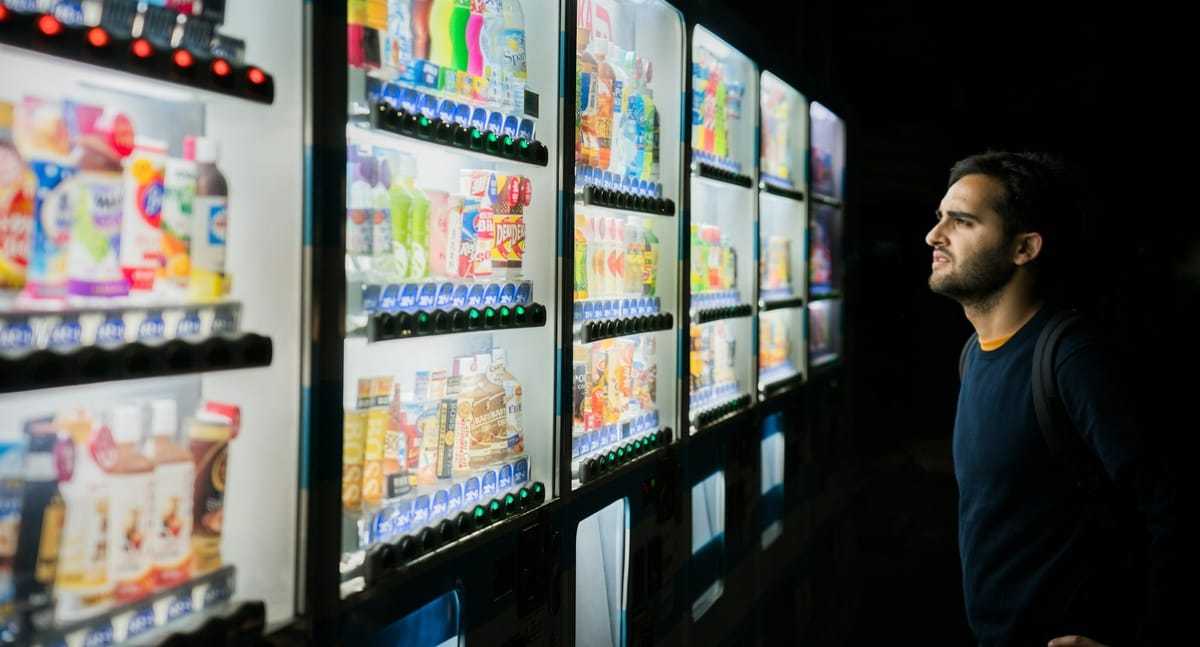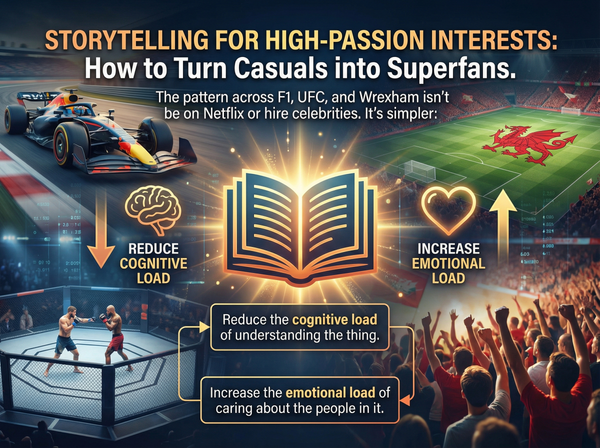System 1 & System 2 Thinking: Purchase Decisions

Every buying decision happens in two stages—and most marketers are targeting the wrong one.
When Nobel Prize-winning psychologist Daniel Kahneman revealed how our minds actually work, he fundamentally changed our understanding of human decision-making. His discovery of System 1 and System 2 thinking explains why logical product features often fail to drive sales, while emotional appeals can create billion-dollar brands.
Let's explore how the world's most successful brands hack into these psychological systems to create irresistible customer experiences.
The Two Minds Inside Every Customer
Imagine your brain as running two different operating systems simultaneously:
System 1: The Automatic Mind
- Fast, intuitive, and emotional
- Operates below conscious awareness
- Makes snap judgments in milliseconds
- Driven by patterns, emotions, and past experiences
- Handles 95% of daily decisions
System 2: The Analytical Mind
- Slow, deliberate, and logical
- Requires conscious effort and attention
- Processes complex information methodically
- Evaluates pros and cons rationally
- Only engages when System 1 encounters something unusual
Here's the crucial insight: System 1 makes the decision, System 2 justifies it. People don't buy because of logical reasoning—they buy because of emotional impulses, then use logic to rationalize their choice afterward.
System 1: The Emotional Autopilot That Drives Purchase Decisions
System 1 thinking evolved over millions of years to keep humans alive in dangerous environments. It makes lightning-fast decisions based on pattern recognition, emotional associations, and social cues. In modern marketing, these ancient mechanisms still control most purchasing behavior.
The Speed of System 1 Decision-Making
Research by neuroscientist Paul Whalen shows that System 1 can process and respond to visual stimuli in as little as 17 milliseconds—faster than conscious awareness. This means customers often know whether they like a product before they can even articulate why.
Apple Store Experience: Apple's retail design masterfully targets System 1 thinking:
- Clean, minimal aesthetics trigger associations with premium quality
- Warm lighting creates emotional comfort and trust
- Product placement allows immediate tactile engagement
- Glass surfaces suggest transparency and sophistication
- Genius Bar positioning implies expertise and support
Customers form positive impressions within seconds of entering, long before any rational product evaluation begins. The environment primes System 1 to associate Apple with innovation, quality, and status.
Pattern Recognition and Brand Shortcuts
System 1 loves mental shortcuts (heuristics) that simplify complex decisions. Successful brands become these shortcuts, allowing customers to make quick choices without extensive deliberation.
The Mercedes-Benz Heuristic: When someone sees a Mercedes logo, System 1 instantly activates associations with luxury, engineering excellence, and social status. This pattern recognition allows customers to bypass lengthy research about build quality, reliability ratings, or feature comparisons. The brand itself becomes the decision-making shortcut.
Amazon's One-Click Revolution: Jeff Bezos understood that System 1 hates friction. Every additional step in the purchasing process gives System 2 more opportunities to intervene with rational objections like Do I really need this? or Should I compare prices elsewhere?
One-click purchasing eliminates these rational interruptions, allowing impulse purchases to complete before analytical thinking kicks in. The result? Billions in incremental revenue from reduced cart abandonment.
Emotional Triggers That Bypass Logic
System 1 responds powerfully to specific emotional triggers that evolved to ensure survival:
Fear of Missing Out (FOMO): Limited-time offers and scarcity messages trigger System 1's loss aversion mechanisms. When Supreme releases a limited drop, customers don't rationally evaluate whether they need another hoodie—they react to the fear of missing exclusive access.
Social Proof and Belonging: Join 50,000+ satisfied customers activates System 1's herd instinct. If others are choosing this option, it must be safe and socially acceptable. This bypasses the need for individual evaluation.
Authority and Status: Celebrity endorsements work because System 1 automatically defers to perceived authority figures. When someone successful uses a product, System 1 assumes it must be good without requiring logical proof.
Case Study: Dollar Shave Club's System 1 Masterclass
Dollar Shave Club's launch video perfectly demonstrates System 1 marketing in action:
Opening Hook: "Hi, I'm Mike, and I have a great f*cking razor" immediately captures attention through mild shock and humor—both powerful System 1 triggers.
Visual Storytelling: Instead of explaining razor technology, they showed Mike walking through their warehouse, creating emotional connection and trust through personality.
Pain Point Activation: "Are you paying for shave tech you don't need?" triggers System 1's loss aversion—the fear of being ripped off.
Simple Value Proposition: "Great razors for a few bucks a month" requires no complex analysis—System 1 can instantly grasp the benefit.
Social Rebellion: Positioning against "Big Razor" tapped into System 1's desire to fight unfairness and join the underdog.
The video generated 26 million views and 12,000 orders in the first 48 hours because it spoke directly to System 1's emotional triggers rather than System 2's analytical processes.
System 2: The Rational Validator
While System 1 makes the initial decision, System 2 plays a crucial role in validating and justifying that choice. Smart marketers provide just enough rational ammunition for System 2 to feel good about System 1's emotional decision.
When System 2 Takes Control
System 2 engages when:
- High-stakes decisions (expensive purchases, important consequences)
- Unfamiliar situations (new product categories, unknown brands)
- Complex information (technical specifications, detailed comparisons)
- Social scrutiny (purchases others will judge)
- Time pressure is low (when customers have time to deliberate)
The Rationalization Process
System 2 doesn't actually re-evaluate the decision—it builds logical arguments to support what System 1 already chose. This is why features and benefits matter, but not in the way most marketers think.
Tesla's Dual-System Strategy: Tesla's marketing brilliantly addresses both systems:
System 1 Appeals:
- Sleek, futuristic design triggers emotional desire
- Environmental virtue signaling provides moral satisfaction
- Celebrity adoption creates social proof
- Silent acceleration delivers visceral thrill
System 2 Justifications:
- Saves money on gas (financial logic)
- Better for the environment (moral reasoning)
- Latest technology (rational superiority)
- Lower maintenance costs (practical benefits)
Customers fall in love with Tesla emotionally (System 1), then justify the purchase rationally (System 2). The logical arguments don't create desire—they make it acceptable to act on existing desire.
B2B Sales: When System 2 Dominates
Business-to-business sales often involve higher System 2 engagement because:
- Multiple stakeholders require justification
- Large financial commitments demand analysis
- Professional reputation is at stake
- Formal evaluation processes are common
However, even B2B decisions start with System 1 impressions:
Salesforce's Emotional Foundation: Before discussing CRM features, Salesforce creates emotional connection through:
- Vision of success: Transform your business
- Problem agitation: Your current system is holding you back
- Peer validation: Case studies from respected companies
- Innovation association: Cutting-edge technology positioning
Only after establishing emotional buy-in do they provide System 2 with ROI calculations, feature comparisons, and implementation timelines.
The Science Behind the Systems
Neurological Evidence
Brain imaging studies reveal that System 1 and System 2 activate different neural networks:
System 1 Networks:
- Amygdala: Processes emotions and threat detection
- Anterior Cingulate Cortex: Monitors conflicts and emotions
- Insula: Integrates emotional and sensory information
- Default Mode Network: Handles automatic, intuitive responses
System 2 Networks:
- Prefrontal Cortex: Executive control and working memory
- Anterior Cingulate Cortex: Focused attention and monitoring
- Posterior Parietal Cortex: Spatial attention and reasoning
The Marketing Implication: Emotional marketing activates reward centers and creates positive associations before rational evaluation begins. By the time System 2 engages, the emotional foundation is already established.
Cognitive Load Theory
System 2 has limited processing capacity. When overloaded with information, it becomes fatigued and defers more decisions to System 1. This explains why:
- Simple messages outperform complex ones
- Decision fatigue leads to impulse purchases
- Choice overload paralyzes customers
- Cognitive depletion reduces willpower
Amazon's Progressive Disclosure: Amazon reveals product information gradually to prevent System 2 overload:
- First impression: Product image and price (System 1)
- Basic details: Key features and ratings (minimal System 2)
- Deep dive: Full specifications available on demand (System 2 when needed)
This progression respects both systems' natural processes.
Strategic Applications: Marketing to Both Systems
System 1 Marketing Strategies
Visual Design Psychology:
- Color associations: Red for urgency, blue for trust, green for growth
- Typography emotions: Sans-serif for modern, serif for traditional
- Image selection: Faces create connection, abstracts suggest innovation
- Whitespace usage: Clean design implies premium quality
Storytelling Techniques:
- Hero's journey: Position customer as protagonist overcoming challenges
- Sensory details: Activate imagination and emotional engagement
- Conflict resolution: Create tension, then provide your solution
- Social proof: Show others successfully using your product
Emotional Positioning:
- Aspiration: Become the person you want to be
- Security: Protect what matters most
- Belonging: Join the community of...
- Achievement: Accomplish more than you thought possible
System 2 Support Strategies
Rational Ammunition:
- Comparison charts: Make logical evaluation easy
- ROI calculators: Quantify financial benefits
- Technical specifications: Satisfy analytical needs
- Third-party validation: Independent reviews and certifications
Risk Reduction:
- Money-back guarantees: Remove financial risk
- Free trials: Allow low-risk experience
- Case studies: Prove results in similar situations
- Expert endorsements: Provide authoritative validation
Decision Frameworks:
- Step-by-step guides: Simplify complex evaluations
- Checklists: Help organize thinking process
- Comparison tools: Structure competitive analysis
- Implementation support: Reduce execution anxiety
Industry-Specific Applications
E-commerce: The Split-Second Sale
Online shopping happens primarily in System 1 because:
- Browsing is low-effort and exploratory
- Visual presentation dominates experience
- Impulse purchases are common
- Social proof is easily displayed
Successful E-commerce System 1 Tactics:
- Product photography: Lifestyle images over technical shots
- User-generated content: Real customers using products
- Limited-time offers: Create urgency and scarcity
- Related products: Trigger pattern-based associations
- One-click checkout: Minimize System 2 intervention
System 2 Support Elements:
- Detailed reviews: Provide rational validation
- Size guides: Reduce purchase anxiety
- Return policies: Lower perceived risk
- Comparison features: Enable analytical evaluation
Luxury Brands: Status and Emotion First
Luxury purchases are fundamentally System 1 decisions justified by System 2:
Louis Vuitton's Dual Approach:
- System 1: Iconic patterns, celebrity associations, exclusivity positioning
- System 2: Craftsmanship details, heritage stories, investment value
The emotional desire comes first; the rational justifications follow.
Technology Sales: Overcoming Feature Obsession
Tech companies often make the mistake of leading with System 2 appeals (features, specifications) while neglecting System 1 emotional connection.
Apple vs. PC Marketing Classic:
- PC Ads: Faster processors, more RAM, better value (System 2)
- Apple Ads: Creative empowerment, design beauty, simplicity (System 1)
Apple consistently outsold technically superior competitors by speaking to emotions first, then providing rational validation.
Financial Services: Trust Before Logic
Financial decisions involve high stakes and complexity, requiring strong System 2 engagement. However, trust and emotional comfort must be established first.
Charles Schwab's Strategy:
- System 1: Talk to Chuck campaign created personal, approachable feeling
- System 2: Detailed investment research, fee transparency, performance data
The emotional foundation of trust enabled rational evaluation of their services.
Implementation Framework: The Dual-System Marketing Strategy
Phase 1: System 1 Foundation (Emotional Connection)
Step 1 - Emotional Audit:
- What feelings do customers have about your category?
- Which emotions drive purchase decisions in your market?
- How do customers feel when they have the problem you solve?
- What emotional transformation does your solution provide?
Step 2 - Sensory Design:
- Visual identity that triggers desired emotions
- Language patterns that feel natural and compelling
- User experience that minimizes cognitive load
- Brand personality that creates connection
Step 3 - Story Architecture:
- Customer hero's journey narrative
- Problem agitation and solution revelation
- Social proof and belonging signals
- Aspiration and transformation themes
Phase 2: System 2 Support (Rational Validation)
Step 1 - Justification Arsenal:
- Features and benefits clearly articulated
- Competitive advantages logically explained
- ROI and value propositions quantified
- Risk mitigation and guarantees provided
Step 2 - Decision Support:
- Comparison tools and evaluation frameworks
- Educational content and expert guidance
- Customer success stories and case studies
- Implementation support and onboarding
Step 3 - Objection Prevention:
- Common concerns addressed proactively
- Logical arguments for seemingly emotional decisions
- Social validation for rational choices
- Authority endorsements and credentials
Phase 3: Integration and Optimization
Seamless System Transitions:
- Emotional hooks that lead to rational exploration
- Logical arguments that reinforce emotional decisions
- Multiple entry points for different system orientations
- Progressive disclosure of information complexity
Testing and Measurement:
- A/B test emotional vs rational messaging
- Measure system engagement patterns
- Optimize for dual-system customer journeys
- Track long-term satisfaction and retention
The Synthesis: Beyond the Systems
Understanding System 1 and System 2 thinking is about alignment. The most successful marketing doesn't fight against human psychology; it works with our natural decision-making processes to create experiences that feel effortless and inevitable.
When you align your messaging with how customers actually think and decide, several things happen:
- Increased Conversion: Customers move from awareness to purchase more naturally
- Reduced Friction: Decision-making feels easier and more confident
- Enhanced Satisfaction: Purchases align with both emotional desires and rational needs
- Stronger Loyalty: Both systems feel validated and respected
The Meta-Lesson: Great marketing doesn't choose between emotion and logic—it orchestrates them. System 1 creates desire and urgency; System 2 provides permission and validation. Master both, and you master the psychology of persuasion.
The brands that dominate are those that understand today's psychological reality: we're not rational beings who occasionally feel—we're emotional beings who occasionally think. Design your marketing accordingly.
Keep Crushing!
- Sales Guy


